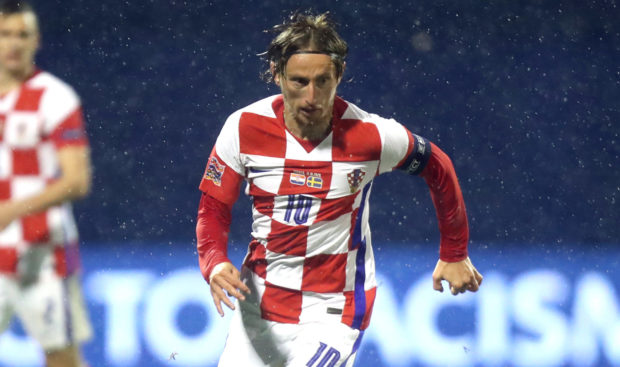
This would likely have been Luka Modric’s last hurrah at a major Finals if he wasn’t such a strong character.
The diminutive midfielder will be 36 in September, an age when most players find that international football is becoming nothing more than a warm memory.
He is yet to decide if he’ll definitely participate in next year’s World Cup Finals, but the captain of Croatia – nicknamed The Blazers – is someone bursting with ambition.
Scotland would far prefer to face a nation led by a man whose best days are behind him – but there’s nothing to suggest that’s the case with Modric.
He signed a new one-year contract with Real Madrid last month, and the Spanish giants expect him to play a huge part in their bid to wrestle back the La Liga title from neighbours, Atletico.
The former Tottenham player has made it very clear that his ambition remains undiminished, despite winning a host of major honours.
He said: “With Croatia, I want another major success, and at club level I want to fight for trophies as long as I have a chance.
“I prepare and work accordingly, and we’ll see how long this will last.”
In many ways, Modric is making up for a time when he was widely written off as being too weak to play top-level football.
It’s something he experienced as a child in his homeland, and it followed him during his early career as a professional.
Scouts for Hadjuk Split said Modric was too small and – at 5ft 7in tall and just over 10 stone soaking wet – too slight to make it.
Fortunately, he is someone with a mental strength that more than makes up for his lack of physical stature.
He believes Croatian people who came through the 1991 War of Independence have an especially tough streak, borne of experiencing a time of extreme hardship.
His early days in football saw Dinamo Zagreb loan him to Zrinjski Mostar in the Bosnian Premier League.
He was named the Player of the Year, aged only 18, and concluded, “Someone who can play in the Bosnian Premier League can play anywhere”.
That achievement has stood him in good stead. The doubters didn’t disappear, but he had proved them wrong and knew he could again.
A £16.5-million move to Spurs in 2008 saw him initially used wide on the left. Again it was thought he was too lightweight for central midfield.
The arrival of Harry Redknapp changed that, and set Modric on the way to becoming the star he is.
During the last nine years, he has picked up a host of honours with Madrid.
He was acclaimed as the world’s greatest player when awarded the Ballon d’Or in 2018
His talent on the ball and ability to deliver defence-splitting passes has few equals.
But it’s not just his individual ability that make him so valuable to his country.
His former national coach, Slaven Bilic, said: “Modric is a player who makes others better.”
That quality alone makes him a huge threat to Scotland.

Enjoy the convenience of having The Sunday Post delivered as a digital ePaper straight to your smartphone, tablet or computer.
Subscribe for only £5.49 a month and enjoy all the benefits of the printed paper as a digital replica.
Subscribe